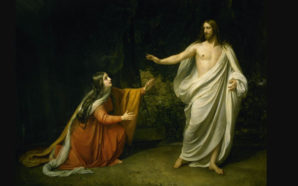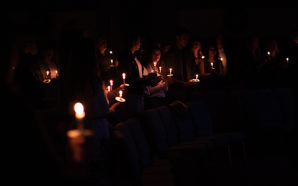When you deal with God, you deal with mystery. For this reason, it is not surprising that there are differences in our perceptions, in our theologies and in our spiritualities.
The Bible itself opens with two variant perceptions. In Genesis 1, the author thinks of God as transcendent, above and beyond creation; a God who says, ‘Let it be’, and it happens.
In Genesis 2, a different author thinks of God as immanent, with us, in the world, with human qualities. God reaches into the soil to form the body of man and then breathes into the body the breath of life.
Two stories of how God created human beings, two differing perceptions of God. Similarly, we pray in the Creed to our God, whom we joyfully proclaim makes both the visible and invisible. Which is true? The transcendent or the immanent? The visible or the invisible? In reality, we Catholics say both. It is the paradox of our faith.
Because we are dealing with God, we are dealing with mystery, and successful dealing with mystery requires what is often called today ‘non-dualistic thinking’. Instead of black-and-white, either-or thinking, we are necessarily led to a ‘both-and’ faith acceptance.
Those most advanced in the spiritual life, those experienced in contemplation and mysticism, come to an acceptance of this ambiguity, ‘seeing through a glass darkly’ and the mystery all around us.
Being open to both God’s transcendence and immanence, to the Church’s holiness and sinfulness, indeed to the very bewildering variety of opinions and schools of thought in today’s world and Church, is no easy matter.
Most of us want certainty and answers, and we want them now. The wait, the uncertainty, the poverty of non-resolution threaten our spiritual equilibrium and peace of mind.
But, in truth, we must be hesitant to resolve every issue with an immediate and often one-sided response.
To jump to a conclusion too quickly militates against one of the major beliefs of our faith, namely that Jesus is both God and man, divine and human. Jesus is the invisible God made visible. If that paradoxical central belief of Catholic faith causes us to puzzle and then to pray and contemplate further—good.
That is precisely what faith is all about. For, after 2000 years, we are still wrestling with the consequences of this revelation!
That is why the wisdom of our Tradition emphasises the centrality of the sacraments and a sacramental imagination for our faith journey. In a time of ritual deprivation, the Christian sacramental road is our way forward. For, in the sacraments, the invisible is made visible.
Catholic faith is precisely about this type of ‘seeing’ what the eyes cannot see—the visible and the invisible—and understanding what is at the heart of things: truth, love, mercy, goodness, beauty, harmony, humility and compassion. It is about seeing the ordinary and perceiving the extraordinary at the same time.
We are, in truth, surrounded by a thousand points of light. We are given great sacraments of grace, the Word of God, the stories of saints, the saga of sinners, and the rumours of angels that inspire and heal us.
‘It is only with the heart that one sees rightly,’ wrote Antoine de Saint-Exupery. ‘What is essential is invisible to the eye.’
That is the Catholic sacramental imagination in a nutshell—I believe in God who makes all things, the visible and invisible.
This article is part of a series of reflections entitled ‘I Believe…Help My Unbelief’: Meditations on the Creed by Br Mark O’Connor FMS.
Br Mark O’Connor FMS is the Vicar for Communications in the Diocese of Parramatta.








